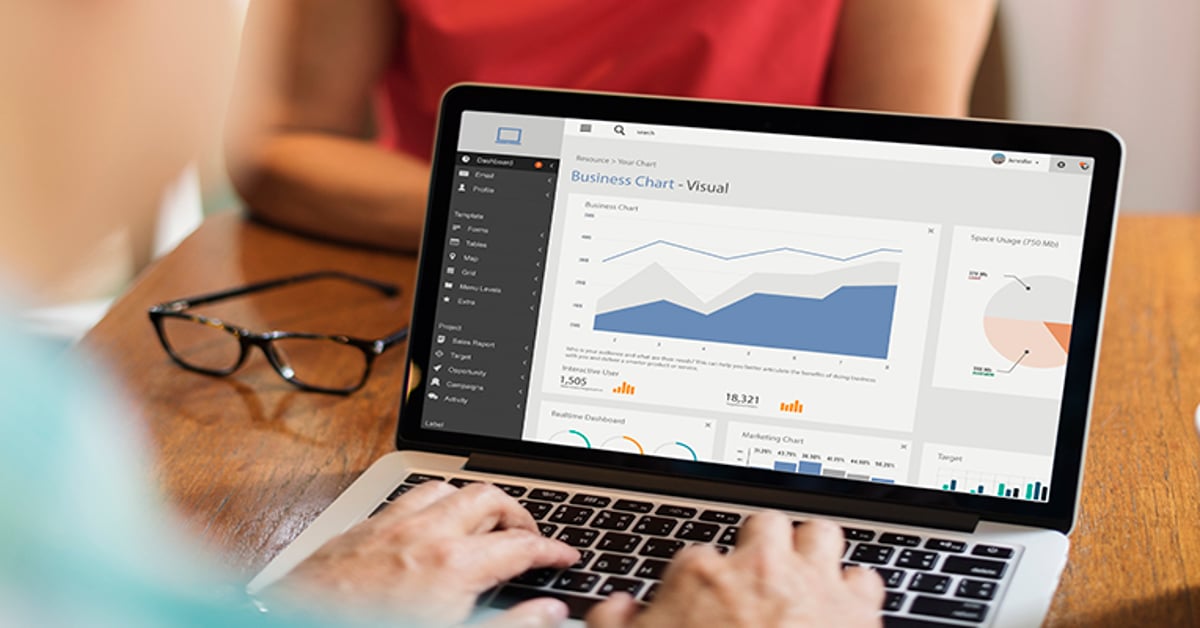Many businesses make the grave mistake of focusing so much on increasing revenue that they end up losing money. Mismanagement, overstocking, and high shipping or service costs can put you out of business even if you're exceeding your revenue goals. Revenue isn't the important thing -- it's profitability.
If you looked at your products right now, would you know which one performs the best, and which does the worst? Do you have any way of determining which items are doing well on a specific channel and which are struggling?
If you're not paying attention to the costs of selling your product, you're potentially losing money with each sale.
SKU profitability reporting is the solution to this problem. Tracking the performance of each product is the key to improving your profits. If you can't pinpoint which product is causing you to lose money, it can be challenging to fix.
By tracking profitability at the SKU level, you can make informed choices about what to do with underperforming products, from adjusting your channel strategy to discontinuing the product entirely. Without SKU monitoring, you’ll have no idea when poorly selling products are bringing your profits down.
Don’t let poor inventory management sink your business. We’ll show you how to optimize the profitability of your SKUs with sound SKU inventory management processes and give you the tools to manage your inventory better.

SKU Management Benefits
Proper inventory management is the difference between a business that flops and one whose supply chain runs smoothly and efficiently for years.
Monitor Product Performance Across Different Channels
Monitoring inventory at the macro level isn't enough. You need to be able to see which products are impacting your profits so you can proactively address issues before they get worse.
SKU-level data monitoring lets you gain insights into your customers' habits, what they like to purchase, and what they have no interest in at all. It's an integral part of improving your distribution and marketing strategies. Having granular data also provides more flexibility on how to view your company's or product's performance.
But how closely do you need to track your products to know exactly how they are influencing profitability?
A useful angle is to compare how a product performs across various channels. What sells well on Amazon might not perform as well on Walmart, and seeing that comparison allows you to adjust where you invest your resources.
Clearer Cost-Analysis
When you imagine the costs of running a business, you might think of shipping, software, or advertising. You also need to consider the costs of managing your online store, the charges you might receive from marketplaces, and your overhead fees. These all get factored into your profitability, and if you apply them at a per-SKU level, you can see which products might be underperforming.
Each marketplace comes with a different set of costs. Tracking these costs allows you to combine it with your COGS to determine if you might be losing money with each sale you make
Measure ROI And Improve Investment Decisions
If you use PPC advertisements, you must also factor that into overall profitability. If you can track your spend across your SKUs, you can decide if you should redistribute advertising funds to optimize your marketing strategy.
Between restocking goods, shipping inventory, and managing storage space, even one underselling product could directly impact your revenue. The money, space, and time lost due to supporting failing merchandise can do more damage than anticipated. Without a SKU management system and careful monitoring, you could spend years wasting money on products that no longer generate revenue. By the time you identify the item damaging your gross profit, it could be too late.

How To Determine SKU Profitability
Once you begin to expand your business, it often becomes challenging to keep track of individual products. You may be tempted to only pay attention to how your company is performing holistically.
Despite this temptation, you should still be monitoring the profitability of individual items. You’re missing out on an opportunity to identify problem SKUs before they drain your revenue.
Knowing what products are the most successful is crucial. You want to keep your popular goods selling well and use them as tools to increase customer loyalty, drive conversions, improve ecommerce sales and strategically bring users' attention to other items in your store.
SKU Profitability Calculation Inputs
If something isn’t making you money, you need to make a change or discontinue it. Take the opportunity to determine why the item isn’t earning money. Is the price too low, or the cost of shipping too high? Do you need to market it better? Could you bundle it with high-selling products to increase the number of eyes on it?
If you want to answer these questions, you need to have the data available to calculate your profitability by SKU.
- COGS data - it is best if this is tracked using the FIFO method, allowing you to track any fluctuations in costs for specific products
- Order fees - this includes any expenses you incur for making a sale on a product
- Overhead costs - the overall costs of doing business, such as HR, staff salaries, equipment, etc.
- Shipping fees - the cost incurred for using shipping provider services like UPS and FedEx
- Insurance fees - any costs related to product or shipping insurance
- Fulfillment Fees - any charges incurred for having orders fulfilled by a 3PL or Amazon FBA
SKU profitability reporting allows you to compare how a product is performing compared to other products in your portfolio. Using this data will reveal potential problems in your approach, giving you the flexibility to make changes before your profits start to dip too low.
A well-timed marketing campaign when sales for a product begin to decrease can help save an item you might have otherwise decided to stop selling. You can also find other creative ways to improve under-performing products, like including them in a product bundle to decrease shipping costs. SKU profitability makes it easier to spot these opportunities so you can maximize your profits and improve your product mix.
How to boost SKU productivity with the right SKU analysis
SKU optimization, also known as SKU rationalization, helps you improve efficiency by determining what stock you should keep, what needs work, and what you should toss.
There are many ways to interpret SKU data. Some methods involve simple observation and analysis, while others go the route of more complex formulas.
If you want to try something more advanced, you should consider doing a thorough SKU analysis. SKU analysis can evaluate the carrying cost of each item in the inventory with the goal to ensure that item is meeting the business’ financial objectives.
This SKU analysis guide can help you manually plot and analyze your SKU data on an individual scale.
Questions To Ask For SKU Optimization
When doing SKU optimization, consider these factors for each product:
- How high or low is demand? How often do you stock out? How long does it take to sell it? Does demand for the product wildly fluctuate and make it forecast sales?
- How much physical space does it take up? Is it earning that space by selling well?
- How much does it cost to purchase and store? Is it making that money back?
- Does the product take up space that higher-demand products could be using?
- Does the product make up the bulk of your inventory costs but not your profits?
- How long does it take to be made and shipped? Is lead time unusually long? Is this hurting your supply chain?
- Are customers satisfied with the item, or is it resulting in many returns?
If you have a high-performing SKU, maybe the problem is that you are continually stocking out. Stock-outs would call for a different optimization solution, like adjusting the reorder point to account for the increased sales volume.
This is why knowing your economic order quantity (EOQ) is so important to ensure optimal inventory flow. You can calculate your EOQ using our EOQ calculator.
SKU Productivity Formula
SKU productivity helps you measure how effective your assortment is against different expectations: from customers, strategic, and financial.
The following steps can help determine which SKUs are in the profit ranges that are pulling their weight.
- First, calculate your SKU ratio. Find and list the gross profit of each SKU (the sales price minus how much the product costs), then divide all of them into gross profit ranges like $0-10, $10-20, and so on.
- Note the number of SKUs in each gross profit range. Divide the number of SKUs in a range by the total number of SKUs, then multiply by 100 percent. That’s your SKU ratio for each gross profit range.
- Next, calculate the sales ratio. Pick a period to cover, like a year, and add up the number of units sold in each gross profit range. Divide the number of sold units in each range by the total number of unit sales and multiply by 100 percent. This number is your sales ratio.
- Compare the SKU and sales ratios in each gross profit range. A high SKU ratio and a low sales ratio means products in that range are underperforming and may be incurring high inventory costs. Your best products to focus on are those with a high sales ratio and low SKU ratio.
Let’s walk through an example of the above formula.
Say you have ten products in the $0-5 range, 20 in the $5-10 range, and 5 in the $10-25 range. You would divide each range by the total (35 products) and multiply by 100. Doing this for each, you'd get SKU ratios of 28.5%, 57.1%, and 14.2%.
Over the past year, you’ve sold 260 units in the $0-5 range, 449 in the $5-10 range, and 309 in the $10-25 range. Now you divide the sold units in each range by the total unit sales (1018 units) and multiply by 100. You’d get a sales ratio of 25.5%, 44.1%, and 30.3%.
The $0-5 range has a SKU ratio of 28.5% and a sales ratio of 25.5%. The $5-10 range has a SKU ratio of 57.1% and a sales ratio of 44.1%. Last, the $10-25 range has a SKU ratio of 14.2% and a sales ratio of 30.3%.
Using this data, you can conclude that:
- $0-5 products are not significantly underperforming, so you might need to push more marketing for these.
- $5-10 products are not selling enough, so you might want to cut back on marketing activities.
- $10-25 products have the best performance ratio despite having the lowest number of SKUs, so you should add more products to this group.
While it's possible to track all this data manually in an Excel spreadsheet, it can be cumbersome once your product portfolio expands. Inventory management software can automatically track the profitability of SKUs with real-time data updates.
Here are some SKU management resources you might find helpful.

How To Level Up Your SKU Management with Skubana (now Extensiv Order Manager)
Excel or Google Sheets might be useful tools for tracking inventory and crunching data, but they are also time-consuming. Formulas are built manually, and if one value is entered incorrectly, it can skew your numbers, leading to wrong decisions.
Inventory management software can mitigate this by automating calculations for you. Not only do they help you save time, but they also track and calculate data for new orders.
There are many inventory management programs out there, including Extensiv Order Manager, and choosing the right one is a process that requires careful consideration. When evaluating an inventory management software for its profitability reporting, there are a few key features to look out for:
- Integrations: Inventory management software is the core of your business, and it should work with the services you're already using. You also need to make sure it can integrate into all of your sales channels and account for any wholesale partnerships.
- Detailed Analytics: No SKU management software is complete without analytics. The software you choose should be able to identify top and bottom sellers and SKU profitability in multiple ways. Profitability should be referenceable on the SKU level, the channel listing level, as well as trackable on each order.
- Multi-Location Support: Whether your business is large or steadily growing, you'll need software that can manage data from multiple warehouses. You should be able to record any costs from the warehouses and apply it to each SKU that ships out of the facility.
- Customization: The inventory management software should be customizable so that it can accommodate your growing needs. You will also be able to stay on the program long-term instead of re-platforming and potentially losing your data.
Extensiv Order Manager can also point you in the right direction if you’re searching for a shipping provider or advanced ecommerce system.
Don’t Let Unprofitable SKUs Bring Down Your Business
A poorly handled inventory can single-handedly end a business. Proper ecommerce inventory management is efficient, well-organized, and offers the data you need to make improvements.
To run a productive business, you need to know what's working and what's not. Tracking profitability at the SKU level is just one way to target underperforming products and significantly increase revenue. Don't underestimate the impact SKU-level reporting can have on your bottom line.








